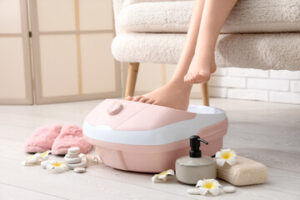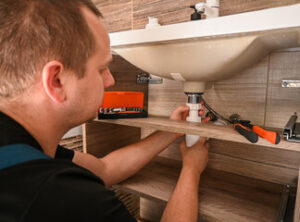Create a spa-like experience in your own home with the right accessories. From bath pillows to aromatherapy diffusers, these items add comfort and luxury to your bathroom.

Improved insulation, covers and design can help your home spa use less energy. Some state and local laws require that portable electric spas meet an ANSI efficiency standard. Contact Spa Kings 4 AZ for professional help.
Propane heaters are a popular choice for heating pools and spas. They offer a range of benefits, including energy efficiency and quick heat up time. They also help reduce energy bills and are easy to use. Additionally, propane heaters can be used in both residential and commercial settings.
They can be installed in both in-ground and free-standing wooden hot tubs, as well as portable spas. They are also safe for ice fishing huts and can be used for a variety of outdoor activities, such as camping. A propane spa heater heats up the water about 1 to 2 degrees per minute, compared with several hours for an electric heater.
This means that you can enjoy your relaxing hot tub sooner and without the need to wait for the heater to finish its cycle. In addition, a propane heater is generally much smaller than its electric counterpart, so it won’t stand out and detract from the beauty of your peaceful spa area. Finally, propane heaters are reliable and efficient, so you won’t have to worry about your hot tub not being warm when you want to use it.
Hot Tub Jets
The jets in a hot tub help create the bubbles that massage your muscles and relieve soreness. They also help your water reach and maintain its set temperature. Keeping your water at a steady temperature will reduce energy waste and lower your monthly operating costs. This is especially important when using a hot tub with an energy-efficient heater, as it requires less energy to heat and recover hot water.
A hot tub’s control pad lets you adjust the temperature and other settings from the comfort of your chair. It is also possible to connect your phone to the controls, allowing you to operate them remotely using an app or from any device with a web browser. This allows you to relax in your spa without having to leave your home or get out of the pool.
You can change the temperature, turn on the lights and even control the ozonator from the comfort of your lounger, saving you time and effort while still maintaining the cleanliness and safety of your water. The filters and ozonator are essential to the health of your hot tub water, removing organic debris and eliminating bacteria that can cause illness.
Your spa’s electrical system provides the power for the pump, heater, and jets. A high-quality insulation system locks in the heat, keeping your water at a consistent temperature while reducing energy consumption. It is possible to save up to 20% on energy bills when choosing a hot tub with superior insulation.
A plug and play hot tub uses a standard grounded outdoor GFCI outlet to connect to your home’s electrical system. This is a safer option than traditional hot tubs that need to be hardwired, as it ensures that the wiring will not cause a fire or electrocution risk. A GFCI outlet shuts off power to the hot tub if it detects a fault, protecting you from potential injuries.
However, a plug and play tub cannot run its heater and jets simultaneously, because they need a greater amount of amperage than your typical home outlet can provide. This means that your tub may take longer to heat up and can have less variety in the types of jets it offers.
Covers
A quality spa cover is essential to prevent heat loss and to keep dirt out of your hot tub. In addition to acting as a safety procaution, it also keeps your water clean and chemically balanced.
If you’re in the market for a new spa cover, be sure to consider Covana’s Smartop Upright. This top-quality spa cover features feather-light opening and closing and comes in a variety of colors. Plus, it provides maximum energy efficiency and is easy to maintain.
If your spa is located in an area with high electric costs, a premium insulated cover will help reduce energy bills. A tight seal insulates the hot tub and locks in the heat, so you don’t waste energy reheating warm air. Adding a thermal blanket to the cover can further lower energy costs.
A sagging, leaking or poorly-fitting cover can lead to damage to the hot tub. If the foam core becomes brittle and cracks, it will leave puddles on the bottom of the cover. Over time, these puddles can break through the vinyl cover and leak into your hot tub.
Leaving a cover on an unattended hot tub can result in a loss of energy due to evaporation and heat loss. Additionally, if the water isn’t circulating properly, your filtration system may not work as efficiently, so you won’t have as clear and clean water.
A good quality insulated spa cover will keep the heat in your hot tub, so you’ll save money on power costs. However, be aware that other appliances in your home can draw a lot of electricity, so make sure to use energy-efficient appliances.
When you’re ready to move your spa, it’s important to carefully plan the project so that you don’t void warranties or end up spending more money on repairs down the road. Having a good plan will also help you increase your profits, because you’ll be able to charge more for services like moving and relocating your spa. You can even charge extra for removing decking and structures around the spa. And, you can also upsell when you’re on site by selling products and accessories like covers, pillows, filters and mineral cartridges.
Insulation
Our TempShield reflective insulation reflects radiant heat back into your hot tub, providing premium energy efficiency and preventing heat loss. It also reduces the vibration of your hot tub components and plumbing, prolonging their lifespan. This type of insulation encapsulates the entire cabinet of your spa, eliminating air flow through the shell. This prevents heat loss, increasing the effectiveness of your spa’s heater and lowering your energy costs.
The Northern Exposure insulation system is made of three layers, including copper material that reflects radiant heat energy from pumps back into your hot tub to be absorbed by the plumbing and shell for a more efficient heating system. It is then wrapped in 3M Thinsulate, which uses the same insulating materials as winter clothing, to ensure that the heat created by your hot tub stays in your spa.
The Bonded Logic natural fiber insulation is made of post-consumer recycled denim that’s thermally bonded for superior insulating performance and is treated with borate to prevent the growth of mold, mildew and pests and acts as a fire retardant. It’s also more environmentally friendly than foam options and can be easily removed for maintenance work without affecting its long-term performance.
